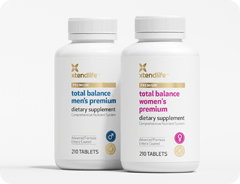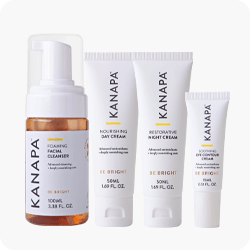In the 1950s, ads for vitamins started to hit the airwaves, and they, urged people to augment their diets with colorful capsules designed to restore vim and vigor and bolster the immune system. For those who were tired and stressed, there was Rybutol, which promised new strength and new energy. “After taking it, I feel full of pep,” said one New York City customer while puffing on a pipe.
Researchers, in the meantime, were busy exploring the benefits of vitamins, to a very mixed response.
Dr. Fred R. Klenner – a Reidsville, N.C., doctor whose former offices now serve as a Halloween haunted house thanks to his radical son’s involvement in the murder of five people, all detailed in a tell-all book “Bitter Blood” – was one of those at the forefront of the vitamin debate.
In the 1940s and ‘50s he used massive doses of vitamin C to help treat everything from polio to muscular dystrophy, and even presented his findings at an annual meeting of the American Medical Association.
Klenner was the first to suggest that ascorbic acid was not only one of the safest, but also one of the most valuable substances in a physician’s arsenal.
Around the same time, Linus Pauling also entered the vitamin C debate, and wrote the 1971 book “Vitamin C and the Common Cold,” which led to the focus on vitamin C and citrus fruits to help protect us during cold season.
Through his own work, Pauling referenced that of Klenner, and said, “The early papers by Dr. Fred R. Klenner provide much information about the use of large doses of vitamin C in preventing and treating many diseases. These papers are still important.”
In addition to touting the medicinal properties of vitamin C, Pauling also began exploring the idea of enzymes and vitamins and the idea that a proper balance of all of them was essential to good health.
So there we were, trying to figure out what was good for us and what was bad. John Wayne was the face of Camel cigarettes, enticing many fans to buy the brand, oftentimes alongside vitamin ads, which sparked their fair share of critics.
As for Klenner, his research was soundly criticized. The doctor was viewed an eccentric, even in his hometown, and though we now know that antioxidants such as vitamin C show significant benefits on health.
While Klenner’s ideas of vitamin overload are still sparking questions, the vitamin company Bexel – which once used pinup beauty Betty Hutton in its ads – may have been ahead of its time.
That vitamin company’s tagline was “prevent secret starvation due to lazy foods”.
Secret starvation by any other name is just as bad
Now known as hidden hunger, secret starvation impacts one in three people worldwide, and is marked by a host of health problems due to diets that are sorely lacking in essential vitamins and other nutrients.
And while you might rightfully point to third-world countries as those facing this plight, they are not alone.
While women and children on the low end of the socioeconomic ladder in developing nations are the most affected by hidden hunger, the lack of essential nutrients also impacts people in developed nations thanks to diets that rely on drive-through dinners, sugar and other over-processed foods.
The risks include mental impairment, poor health, low productivity and chronic diseases, all of which can severely tax health care systems and government budgets already straining to meet people’s needs.
When Morgan Spurlock (“Super Size Me”) ate nothing but McDonald’s meals for 30 days back in 2004, he was making a big point about the very real dangers the fast food industry doesn’t like to share with its customers. But eating fast food for virtually every meal is a common trait of American teens and young people that’s spreading across the globe almost as fast as you can say hamburger.
And while his film did encourage the addition of some healthier items on fast-food menus, it didn’t really spark the conversations we need to be having. Our food supply is killing us, slowly but surely.
A health crisis in food
Experts across the globe are looking at ways to fortify our foods with nutrients. And while this idea has merit, it may, in the end, cause as much harm as it does good.
- Vitamin and mineral deficiencies are a major burdon an health systems.
- As time passes, more nutrients are being leached from the soil, meaning the existing food supply is providing fewer essential nutrients that it did previously.
- Changes in agriculture have led to a reduction in essential nutrients in foods, such as a shift to feed cattle corn instead of grass, which resulted in a big reduction in the DHA – a fatty acid essential to brain health and function – found in beef.
- Foods that are fortified are often fortified with vitamins that are produced synthetically, from coal tar and other toxins. While the resulting ingredient looks the same under a microscope, the natural vitamin and the synthetic in reality are different. In some cases synthetic vitamins are missing key elements required for the body to actually use it, so in order to make use of the nutrient the body must find that element elsewhere, which results in deficiencies.
Vitamins from natural plant sources – such as those found in our Total Balance formulas – are the best ways to take in vitamins and antioxidants that your body can actually use.
Far from the anti-antioxidant crowd
We began hearing about antioxidants in the 1990s, about the time researchers understood free radicals and how these rogue cells contribute not only to the aging process but also to chronic diseases.
Sparked by everything from cigarette smoke and environmental toxins to a steady diet of processed foods, free radicals go on rampages throughout our bodies, triggering inflammation and potentially serious diseases.
Antioxidants are the answer, experts said, and we jumped, taking supplements to fill the gaps in our diets.
And then, almost as soon as we began thinking about antioxidants as cell-sized superheroes on hand to help rescue our bodies from the dangers of free radicals, we began hearing about how antioxidants might also be hazardous.
Researchers from the Maastricht University in the Netherlands recently called out fellow scientists for these all-or-nothing belief systems in an article appearing in Trends in Pharmacological Sciences.
“For several decades, we have noticed that the antioxidant pendulum appears to swing vigorously from ‘only healthy’ to ‘extremely toxic,’ and from ‘natural antioxidants are best’ to ‘antioxidants cannot act.’ The squabbling parties do not seem to listen to counter-arguments. Erroneous statements are not corrected, and thus the pendulum oscillates to the extremes. This inevitably hampers research in the field and confuses both scientists and consumers. As a consequence, we might fail to spot opportunities for which antioxidants may aid in optimizing health.”
The idea is to make sure that the antioxidants are present in the proper amounts, they said.
The truth is out there
Long-standing beliefs have led to a host of different health problems, as well as a misinformed public and a health care system that isn’t clear about what direction to head.
One day we hear one sound bite, the next day we hear another, but it is up to us to learn what is right for our health.
When we watch a documentary on the negative impact of just one month of eating fast food can have on our health, it falls on us to think about how those morsels of junk food are as useless as junk science.
Usually, a healthy mix of past and present – lessons learned along with new technology that launches old ideas into the future – results in the most prudent approach.
That sense of balance is the basis of our Xtendlife philosophy.
We look back at those who said that a body in harmony is a body that is healthy, but use cutting-edge technology and research to make that happen.
Through our three main supplements – which we call our Core Wellness sets – your body will have the right digestive health to take in essential nutrients, blood vessels that are well supported to deliver those nutrients and the synergistic mix of vitamins, minerals and other essential nutrients to fuel our body’s cells.
The idea of nutrients in the right amounts being the most beneficial is one that we embrace.
Our supplements not only offer the right amounts of nutrients for optimum cell health, they also are delivered in such a way that we are able to make the most of them.
References:
- Josh Clark, Should Antibacterial Soap be Outlawed, http://health.howstuffworks.com/skin-care/cleansing/myths/antibacterial-soap-outlawed.htm
- You might be taking synthetic vitamins even if you don’t take vitamins,http://theurbanhomestaed.blogspot.com/2012/09/why-you-might-be-taking-synthetic.html
- About Hidden Hunger, http://www.micronutrient.org/English/View.asp?x=573


 Supplements
Supplements Bundles
Bundles









